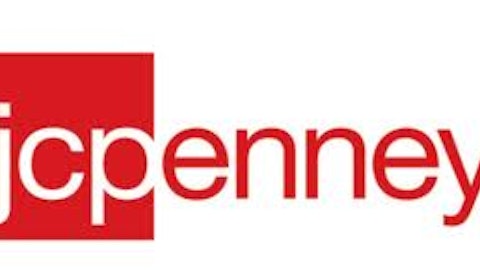
An undervalued and unloved stock
Sears Holdings Corp (NASDAQ:SHLD) Chairman Eddie Lampert has said of Sears:
Sears Holdings has over $20 billion of assets on our balance sheet. In some cases, the fair market values of our assets are not reflected on the balance sheet due to GAAP convention, such as the value of our owned real estate and many of of our below market leases. We have a portfolio of businesses and assets that deserve to generate substantial value for our shareholder.
Likewise, the President of Sears Holdings Corp (NASDAQ:SHLD)’ Real Estate Development, David Lukes, has said, “Sears Holdings has one of the most diverse and valuable real estate portfolios in the country and I look forward to creating additional value for the company by enhancing and repositioning selected parts of its real estate portfolio.”
Bruce Berkowitz has said of his investment in Sears, “Many despair that Sears seems unable to regain past retail glory, despite a conservative balance sheet and many valuable assets. In searching for instant gratification, most are missing key points.”
Berkowitz says the best way for investors to analyze and value Sears Holdings is by using Benjamin Graham’s Margin of Safety. This refers to the difference between the market price and the intrinsic value of the underlying business. In using Margin of Safety, there are several key points:
New retail centers are not being constructed like they were in the past.
The urbanization trend continues to drift towards metropolitan centers.
Sears Holdings Corp (NASDAQ:SHLD) and Kmart leases often exceed 50 years with no rent escalators.
Kmart retains the right of first refusal on potential purchases of its leased properties.
Sears is typically an anchor tenant in most mall locations.
Sears and Kmart properties have few, if any, operating covenants or restrictions.
Sears and Kmart have negotiating leverage due to co-tenancy clauses of adjacent retailers.
Accounting rules did not require Kmart to revalue its real estate after its merger with Sears.
Looking at both Sears and Kmart, we see that they comprise over 250 million square feet of retail space. This is more than the square footage controlled by the largest mall owner in the U.S., Simon Property Group, which has a current market cap of $55.69 billion versus Sears’ $6.19 billion.
Hidden brand value
Deep inside Sears Holdings Corp (NASDAQ:SHLD), besides the real estate assets, are several key retail brands. Sears is the leading home appliance retailer with its Kenmore brand. The company’s Craftsman brand is the number-one line of tools and is a brand of lawn and garden equipment as well. Finally, Sears is a leading exercise equipment seller.
There’s more good news. Other retailers like Costco and Ace Hardware have begun to sell Sears’ products, and Sears Holdings Corp (NASDAQ:SHLD)’ Lands’ End catalog also has significant room for expansion, both domestically and internationally.
Competition
In analyzing Sears’ stock, it’s best to compare the company to J.C. Penney Company, Inc. (NYSE:JCP), Macy’s, Inc. (NYSE:M), Target, and Kohl’s.
| Sears | JC Penney | Macy’s | Target | Kohl’s | |
| Revenue | $39.85B | $12.98B | $27.69B | $73.30B | $19.28B |
| Price to sales | 0.16 | 0.32 | 0.68 | 0.62 | 0.57 |
| PEG ratio | 0.13 | 0.23 | 0.82 | 1.29 | 1.49 |
In doing this comparison, we see that Sears has the lowest PEG ratio and trades at the lowest price-to-sales ratio. J.C. Penney Company, Inc. (NYSE:JCP) has been seeing immense downward pressure on sales. In its recent quarterly results show that the story is still bleak for Penney. Comp sales from the quarter ending in April were down 16.6% year-over-year. Other recent news includes the fact that Ron Johnson is out and former CEO Mike Ullman has returned to the company.
One of the big headwinds for J.C. Penney Company, Inc. (NYSE:JCP) is robust competition in the apparel trail sector, as well, other headwinds, such as issues surround its coupon policy, has led to lower customer traffic. Traffic was down 11% in the first quarter, 12% in both the second and third quarters, and 17% in the fourth quarter of fiscal 2012.
Billionaire Bill Ackman of Pershing Square is still one of J.C. Penney Company, Inc. (NYSE:JCP)‘s big supporters, having 8% of his hedge fund’s 13F invested in the retailer (check out Ackman’s top stocks).
Meanwhile, thanks to Macy’s, Inc. (NYSE:M) affluent customer base, the retailer has weathered the economic slowdown nicely. Macy’s, Inc. (NYSE:M) recent quarterly results showed that EPS is growing nicely, posting $0.55, up from $0.43 in the same quarter last year. Comp store sales growth was 3.8% last quarter, and fiscal 2013 comp sales are expected to be 3.5%.
Macy’s, Inc. (NYSE:M) is also one of the top companies when it comes to managing and returning cash flow to investors. The company has been paying down debt and upping its dividend; in fiscal 2012, Macy’s paid dividends of $324 million and repaid debt of $1,803 million. Maverick Capital still has a lot of hope for Macy’s, Inc. (NYSE:M) future growth, with 4.3% of its portfolio concentrated in the stock going into 2013, which made the retailer its number-one holding (check out Maverick’s small cap picks).
Assessment
I think J.C. Penney Company, Inc. (NYSE:JCP) still has issues related to its turnaround. It appears there could still be downside in the stock. Meanwhile, Macy’s, Inc. (NYSE:M) appears to be a solid investment. Now, Bruce Berkowitz has studied Sears and sees an undervalued situation. He has the patience and is taking a long-term perspective. Over the long-run, I agree with his bullish position and see further gains in the stock over the next several years.
The article Hedge Fund Manager Still Bullish on This Real Estate Play originally appeared on Fool.com and is written by Marshall Hargrave.
Marshall Hargrave has no position in any stocks mentioned. The Motley Fool has no position in any of the stocks mentioned. Marshall is a member of The Motley Fool Blog Network — entries represent the personal opinion of the blogger and are not formally edited.
Copyright © 1995 – 2013 The Motley Fool, LLC. All rights reserved. The Motley Fool has a disclosure policy.
